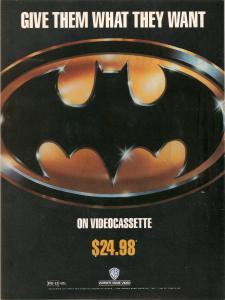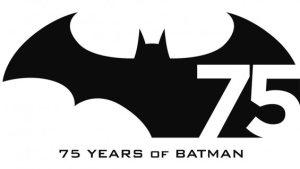Wow, wasn’t this just in theaters?
There was a time when you’d never have any real cause to say that. Movies came out in theaters, and exactly 6 months later they were out on home video. That’s just how it was. Everyone won out in that scenario. The theater owners were guaranteed an exclusive 6-month window during which they were the only option for anyone who wanted to see that cool new movie. Suck it, VHS and cable! The studios managed their revenue stream based off of this arrangement, employing an entire system of “windows” to release their films to different markets. First, the movies play in theaters, then six months later the video window opens, followed by the opening of the pay-TV and then the free television window.
Then throughout the 90s into the 2000s it became increasingly common to notice a movie on the shelf of your local video store or Best Buy (or Best Buy equivalent) and wonder aloud, “Wow, wasn’t this just in theaters like 2 months ago?” I had that exact same reaction back in 2004 when the Ben Affleck abomination Surviving Christmas (remember when the world collectively decided it really, really hated Affleck?) bombed so hard during its late October release that the studio put it out on DVD a week before Christmas, basically 2 months to the day after its theatrical debut. That’s an extreme example, but a definite illustration of Hollywood’s willingness to risk angering theater owners by paying zero attention to long-agreed upon exclusive release windows. It didn’t so much matter with Surviving Christmas because who the heck really cared about that disaster of a film? However, what about a movie people actually wanted to see?

Surviving Christmas couldn’t have cost that much to make. Look at how little they clearly spent on photo-shopping this promotional image.
Cut to today and the exclusive theatrical release window is now down to a little over 3 months. So, Transformers: Age of Extinction is hitting home video this week even though it didn’t premiere in theaters until basically the start of July. Nowadays, that’s just how it is. Sure, the window is shorter, but it is still there.
That’s not good enough. Not for The Weinstein Co. (TWC) and Netflix, anyway. They seem intent to completely obliterate the release window altogether, mostly because the ever-coveted youth market watches movies almost exclusively on their tablets and mobile devices. You have to go where the customer is. So, TWC’s speciality label RADiUS has been experimenting with day-and-date releases whereby you make your movie available to rent through VOD at the same time it premieres in theaters. This has mostly been an area for films which weren’t quite commercial enough to warrant a more traditional theatrical release, but throughout this process they’ve quietly built relationships with theater owners and established which exhibitors are open-minded and which are not. This was put to an extreme test this summer with Snowpiercer, a critically adored, thoughtful action flick featuring an international cast led by Chris “Captain America” Evans. It was a movie observers thought could have been a box office hit given the right marketing campaign, but instead RADiUS basically went with next-to-no advertising and dropped it in just a few willing theaters while primarily earning revenue from VOD sales.
That’s okay, though, because they were still at least making some money from theaters in that scenario. Plus, they were still charging people a set fee to see the movie, regardless of whether it was in theaters or on VOD. Now, Netflix is jumping into the game, daring to essentially give away major feature films for free (er, not really free, but instead for a set monthly access fee). The streaming giant announced earlier this week that it has partnered with TWC and Imax on Crouching Tiger, Hidden Dragon: The Green Legend, which will debut on Netflix and in select Imax venues on Aug. 28, 2015. This is Netflix’s first feature-length film, but it is simply the first of many to come. They just signed a 4-picture deal with Adam freakin’ Sandler!

Of the Netflix deal, Adam Sandler said, “I agreed to it for one reason and one reason only…Netflix rhymes with Hot Chicks.” I am 100% serious. He said that.
Theater owners are ever-so pissed. It’s not really their place to care what films show up on Netflix just so long as they don’t interfere with traditional release windows. However, here’s Netflix claiming its going to premiere some big movies at the same time they are playing in Imax theaters. Thems fightin’ words!
Why? Because Imax is simply a company that leases its technology to theater owners, and in return they takes a small cut of the profits. Of the roughly 400 Imax theaters in the U.S. and another 320 overseas, Imax itself only owns four or five of those, though they do operate about 125 theaters in educational settings like museums, science centers and aquariums. Yet here they are not only announcing this deal for The Green Legend but also confirming that they intend to release 3-4 films a year with Netflix, although only in traditionally slow times for new movies so as not to piss off Hollywood. That’s nice and all, but they actually have no real say in what the actual proper Imax theaters choose to exhibit. Regal, Cinemark, and AMC, which combine to account for 61% of North American Imax theaters, have made this abundantly clear by quickly refusing to exhibit Green Legend next year if it premieres on Netflix at the exact same time. The same goes for Cineworld in Europe and Cineplex in Canada. In fact, AMC’s parent company, Wanda Cinema, may extend the ban to its Imax theaters in China even though that country doesn’t even have Netflix. It’s the principle of the matter, dangit.
Basically, the theater owners have gone all Captain Picard from Stark Trek: First Contact on Imax and Netflix’s asses:
But when was the “line” first crossed? Who was the first who decided that 6 months was simply too long to wait for a home video release, thus sort of setting the stage for Netflix to decide that waiting a single minute is too long?
Well, there’s probably little suspense here because if you read the title of the article you know the answer: it’s Tim Burton’s Batman!
As Forbes’ Scott Mondeleson argued:
Batman was the template for the modern blockbuster. It was based on a preexisting property. It succeeded as much based on manufactured pre-release hype as any kind of genuine natural excitement or word-of-mouth buzz. It was preceded by a massive saturation marketing campaign that threatened to make its actual release feel anti-climactic. It made its money in a front-loaded manner which made its quality all-but-irrelevant. It made opening weekend king, made the PG-13 rating into the all-purpose general rating for the eventual four-quadrant blockbuster, and kick-started what would eventually be the quick-kill blockbuster. Its positives are matched if not overshadowed by the negative lessons learned by an industry gobsmacked by its manufactured success.
No movie before Batman had opened so big and fallen so fast. It needed ten days to get to $100 million but another month to get to $200 million. Sound familiar? That’s basically what happened this summer with both Amazing Spider-Man 2 and Godzilla. Except unlike those two Batman didn’t quietly exit theaters after reaching the $200m mark. Despite being so front-loaded, it played in theaters for a total of six months, ultimately making $251.1m domestic and grossing less worldwide ($411.3m) than Indiana Jones and the Last Crusade ($471m) that year.
However, Warner Bros. was not content to wait the standard 6 months to put the film on home video. It was clearly a product of pure hype in a way we’d never really seen before. Previous phenomenons like Star Wars, E.T., and Ghostbusters actually got better as they went along in theaters, not worse. So, waiting 6 months and missing out on the Christmas shopping seasons for home video risked leaving money on the table. So, at the end of October they gave Batman one final theatrical push by adding 337 screens, and then two weeks later they put it out on VHS, basically four and half months after its theatrical debut.

A VHS ad summing up Warner Bros.’ philosophy
This was a precedent-setting move. No movie (or at least no movie of any importance) had ever stepped outside the sacred 6-month window. Moreover, in 1989 newly released videotapes were meant to be rented more than sold. They made this pretty clear with their pricing. To rent cost just a couple of bucks, but to buy carried an average price of $89.95. That makes your choice kind of obvious, right? Batman was having none of that nonsense. It retailed for $24.95, and it even came with a Diet Coke commercial shot while the film was in production:
The early release and affordable pricing paid off, resulting in as many as 11 million videocassettes sold and thus $150m in sales. Of course, all of this was happening while the movie was still technically playing in theaters, particularly smaller, second-run theaters whose entire bottom line was dependent upon being the last place to see a movie before it came out on video. So, just as they are now with Netflix’s recent moves theater owners were ever-so pissed, as covered in this 1989 news report about the VHS release:
That was the beginning of the end for the 6-month window. Studios slowly started chipping away at it in a constant tug-of-war with theater owners. Before home video, such insanity would be unthinkable. As late as 1980, movie theaters accounted for 55% of a film studio’s total revenue. By 2007, that had shrunk down to 20%, with over half of that coming from overseas. The other 80% came from DVDs, Blu-rays, PPV, cable, and network television. So, it no longer made sense to wait so long to get movies into what had become their primary revenue stream. Warner Bros. led the way with Batman and continued to do so decades later with the Harry Potter films. The release window has now unraveled to the point of being cut in half to a mere 3 months.
The argument for maintaining at least some kind of artificial window is that the “theatrical platform, to which most of the PR hoopla, magazine covers, TV talk shows, and the rest of the celebrity-worshiping culture is geared, is crucial to generate worldwide home video sales.” The counter-argument is that DVD/Blu-rays sales have flattened, movie attendance is down, and everyone is switching to watching movies on their tablets and assorted mobile devices. So, you have to go where the money is, and if Netflix is seriously insane (or insanely rich enough) to make 4 different Adam Sandler movies at probably a minimum budget of $40m-per then you have to say, “Yes, sir, may I have another?”
It’s like Captain Picard said: A line has to be drawn, this far, no farther! Ever since Batman, that has been the on-going argument between theaters and Hollywood studios. Now, here’s Netflix, ever willing to think outside the box, coming along to not-so-politely ask, “Why do we even need a line anymore?” Thus begins a fight to the death we’ll be hearing about for years to come, and it all started with Batman.

Sources: Forbes, THR, Bruce Scivally’s book Billion Dollar Batman, Edward Jay Epstein’s book The Hollywood Economist

